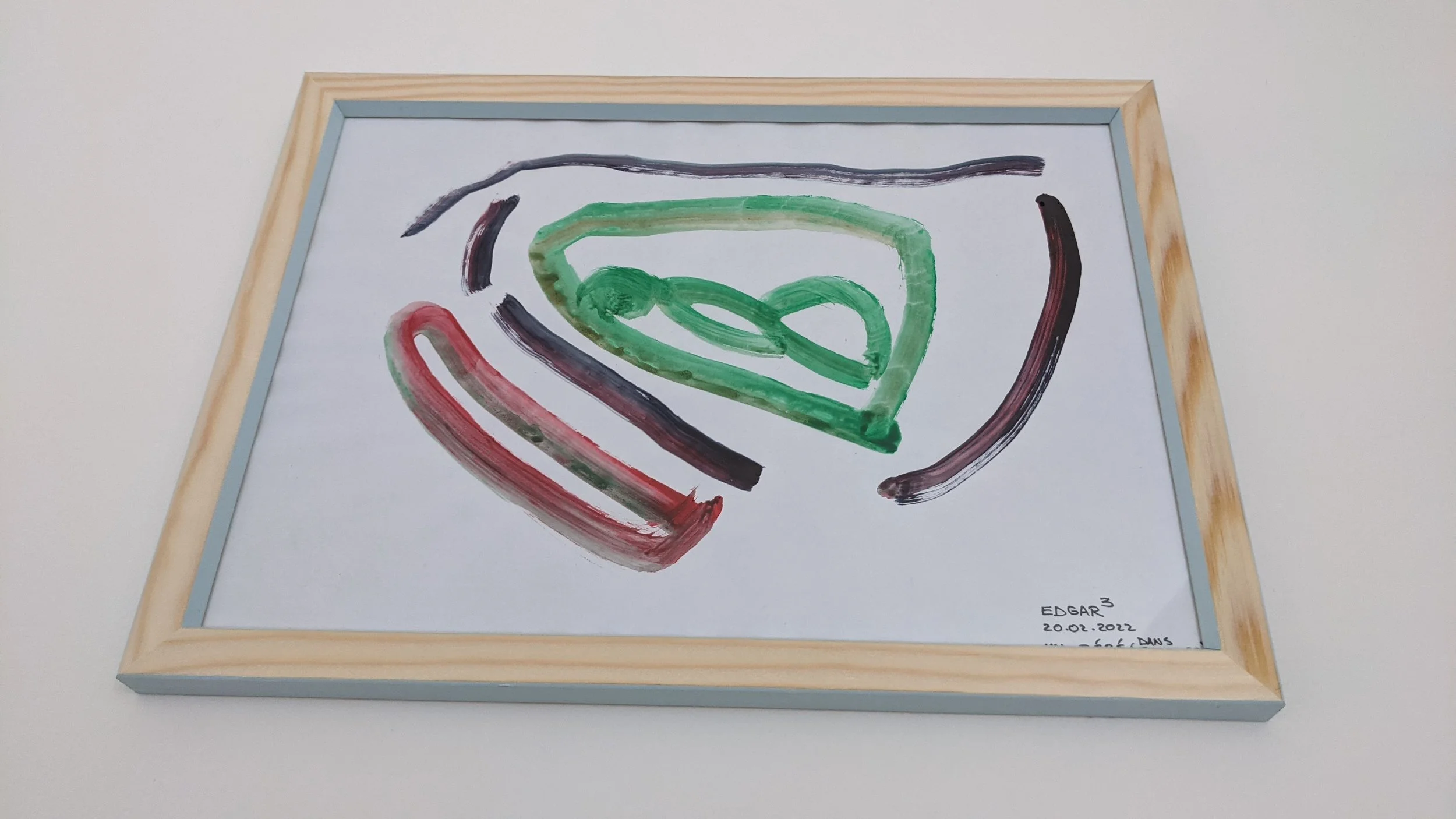 Image 1 of 7
Image 1 of 7

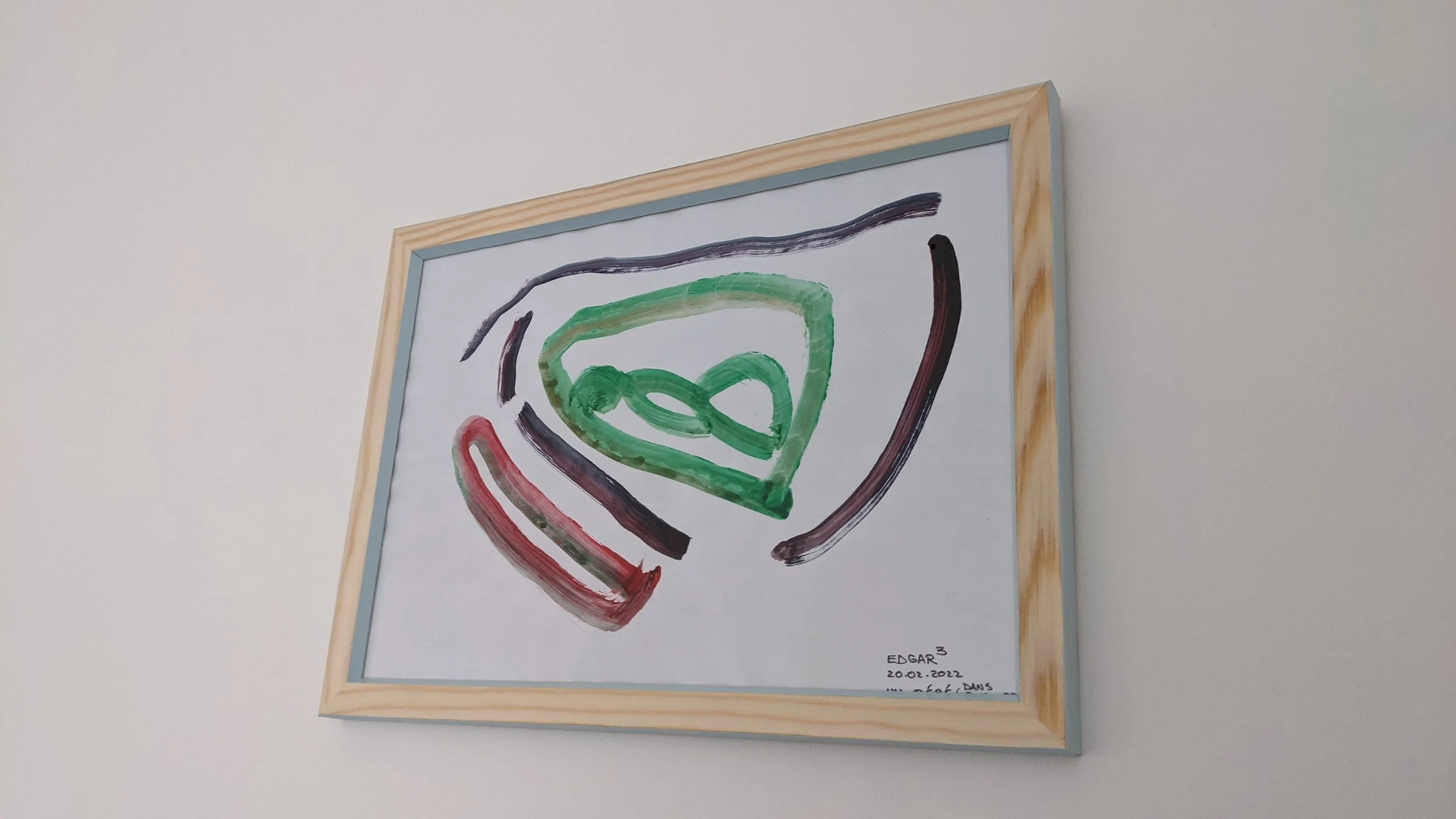 Image 2 of 7
Image 2 of 7

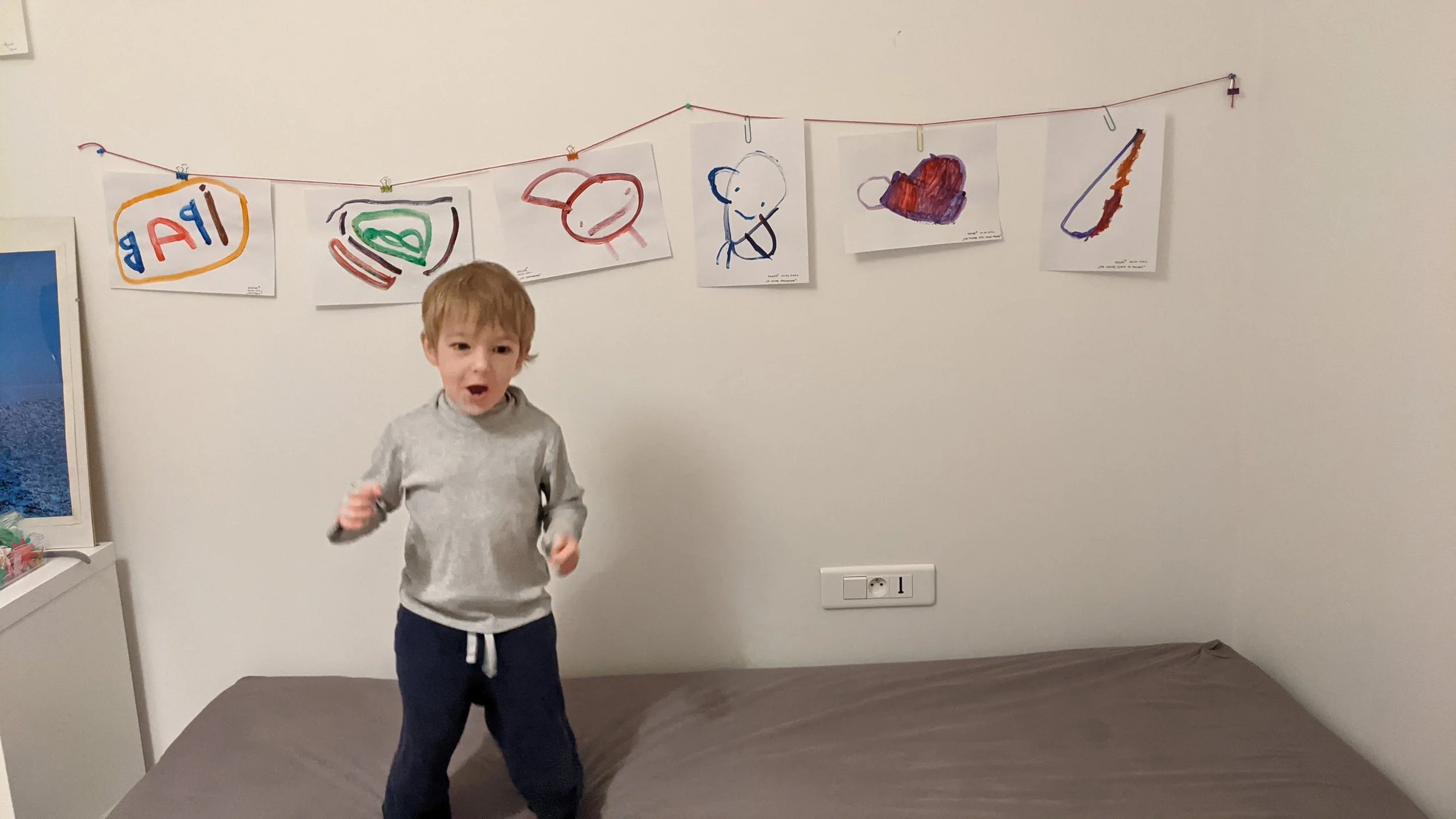 Image 3 of 7
Image 3 of 7

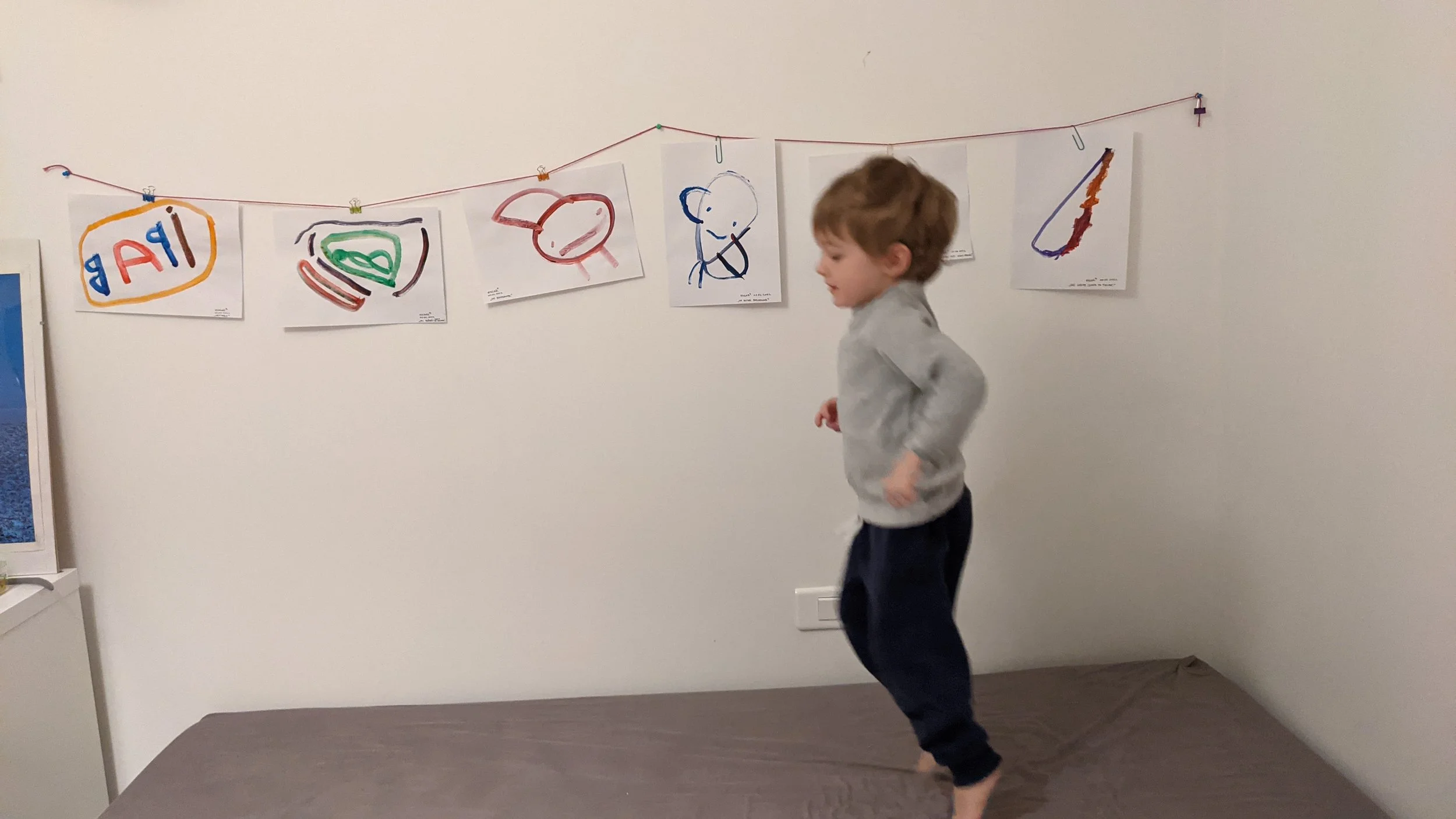 Image 4 of 7
Image 4 of 7

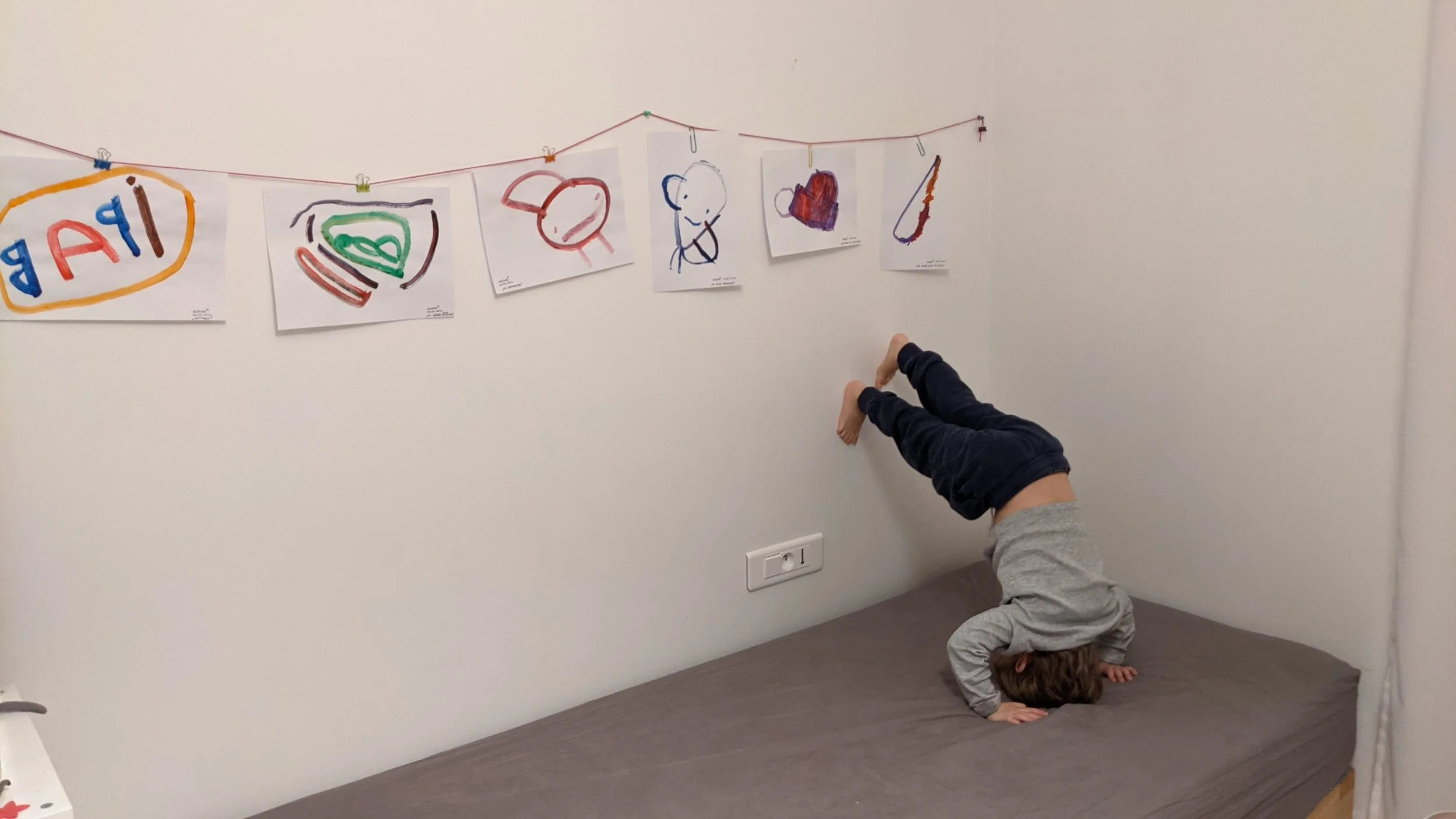 Image 5 of 7
Image 5 of 7

 Image 6 of 7
Image 6 of 7

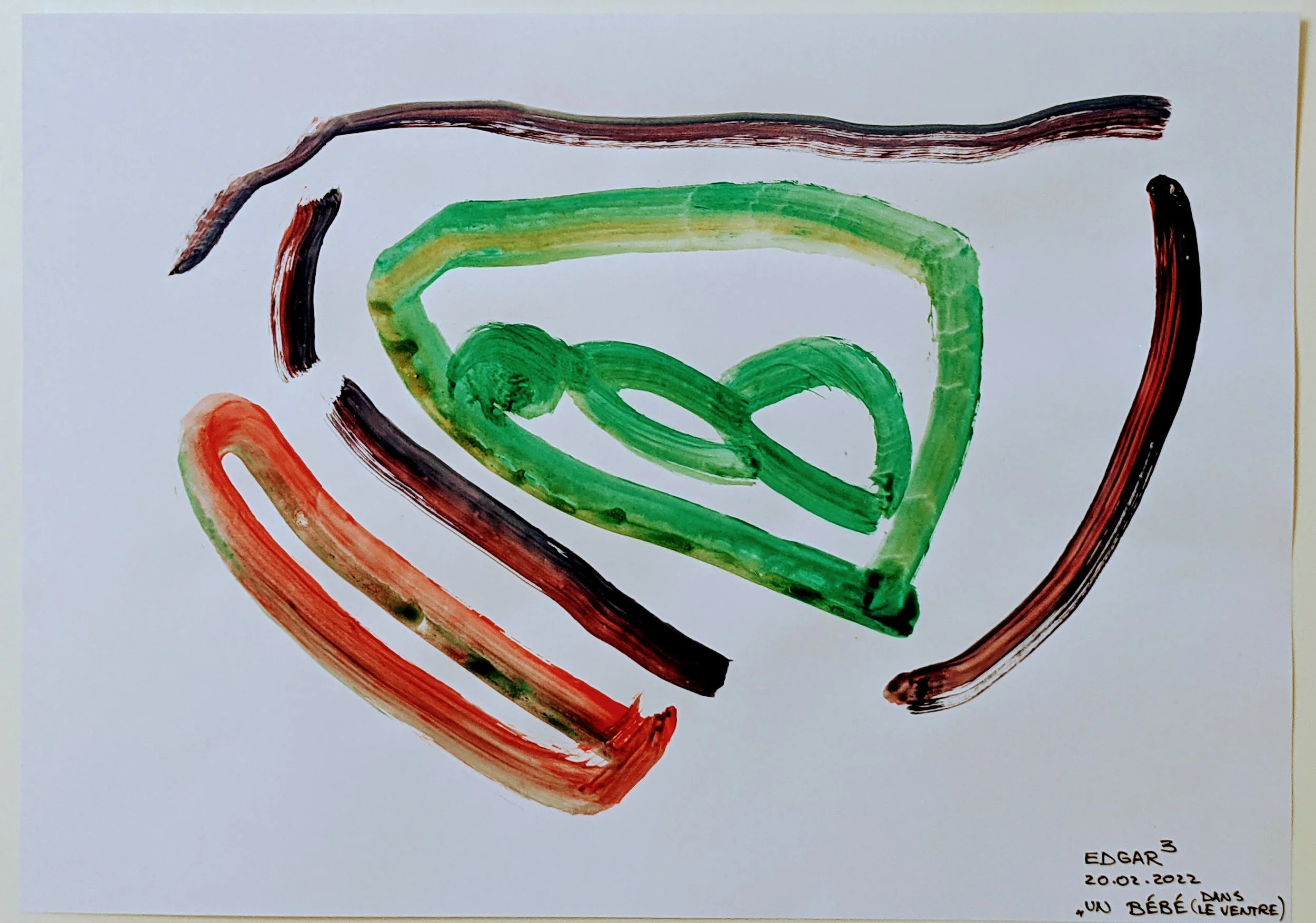 Image 7 of 7
Image 7 of 7








“A Baby in the Belly” — SOLD to a Private Collection (Paris)
“Un bébé dans le ventre” – The Story
Edgar was only 3 years old when he painted this piece.
He sat down with his small pots of tempera and, without any explanation, began to draw a shape that looked like a shelter, then added a tiny green form inside it.
When we asked him what it was, he answered simply:
“C’est un bébé dans le ventre.”
None of us knew where this came from.
Maybe he had seen something on TV, maybe a documentary, maybe a conversation he overheard…
But at that age, Edgar often absorbed things without us realizing it — and transformed them into images.
The painting shows a surprising sense of structure and symbolism for a child so young:
a protective outer line, a central form curled like an embryo, and waves of colors suggesting movement, safety, warmth.
A few months later, the painting was acquired by a Parisian gynecological surgeon, chief of clinic, who immediately understood its emotional resonance.
“I was stunned by the clarity and force of the drawing.
It now hangs in my office in Paris.”
For us, as parents, this work remains one of the most mysterious and moving moments of Edgar’s early artistic life — the moment where he first connected his imagination with the invisible world.
“Un bébé dans le ventre” – The Story
Edgar was only 3 years old when he painted this piece.
He sat down with his small pots of tempera and, without any explanation, began to draw a shape that looked like a shelter, then added a tiny green form inside it.
When we asked him what it was, he answered simply:
“C’est un bébé dans le ventre.”
None of us knew where this came from.
Maybe he had seen something on TV, maybe a documentary, maybe a conversation he overheard…
But at that age, Edgar often absorbed things without us realizing it — and transformed them into images.
The painting shows a surprising sense of structure and symbolism for a child so young:
a protective outer line, a central form curled like an embryo, and waves of colors suggesting movement, safety, warmth.
A few months later, the painting was acquired by a Parisian gynecological surgeon, chief of clinic, who immediately understood its emotional resonance.
“I was stunned by the clarity and force of the drawing.
It now hangs in my office in Paris.”
For us, as parents, this work remains one of the most mysterious and moving moments of Edgar’s early artistic life — the moment where he first connected his imagination with the invisible world.